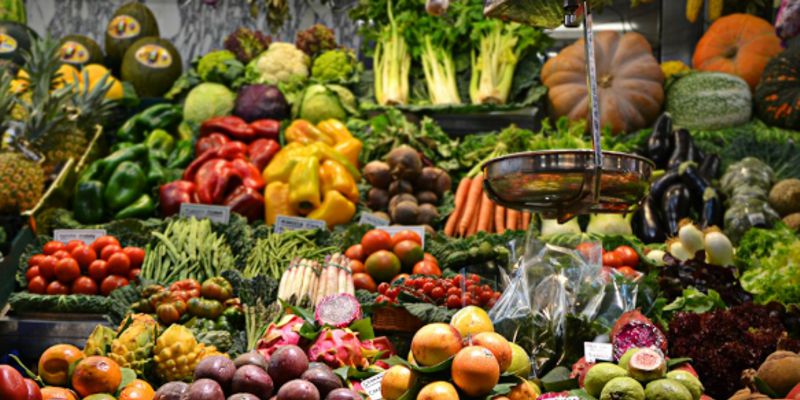Perennially Popular

While faced with inflation challenges, Canada’s produce sector is growing
By Robin Brunet
The famous observation about food sales being resilient to adverse economic conditions is certainly true of the produce sector in Canada in 2024, despite rampant inflation. However, high prices have had an impact on some categories once thought to be indestructible.
First, the good news: produce sales are growing for many grocers across the country and expected to continue into 2025. As for production, Agriculture and Agri-Food Canada reports that “assuming normal weather conditions and a return to trend yields, production and supply for most crops are expected to increase with total principal field crop production returning to normal levels at 94.4 million tonnes, 5 percent and 4 percent higher than the five-year and ten-year average, respectively.”
The prospect of healthy yields is important considering the powerhouse status of produce within the overall food market. Ron Lemaire, president of the Canadian Produce Marketing Association, says, “Our recent study published in 2023 indicates that the fresh produce supply chain contributes nearly $15 billion to Canada’s GDP and supports 185,400 jobs.”
Lemaire delves into consumption data to paint a picture of the diversity of Canada’s produce sector. “An internal study released this year indicates that 58 percent of fruit purchases are for core fruit products including bananas, apples, grapes and oranges, while 55 percent of vegetable purchases are for core vegetable products such as potatoes, carrots, onions, and broccoli.”
The CPMA also keeps tabs on who is doing the buying. “Most produce shoppers are female, who outnumber males by at least 15 percent for both fruits and vegetables,” Lemaire says. “Also, over the first months of 2024, Canadian consumers showed more openness to pay extra for certain types of products, particularly organics, which led by 64 percent.”
Luc Prevost, executive VP of sales & marketing at Vegpro International Inc., has a slightly different take on the state of the produce market in 2024. “Inflation is having an effect,” he says. “Consumers are increasingly challenged to fulfill their food needs, and they’re doing so by focusing on needs and not wants.”
The CPMA’s findings notwithstanding, Prevost says the focus on needs instead of wants has negatively impacted the organics category. “Some avid organic consumers have had to leave the category in order to fill their dinner plates,” he says.
Prevost has witnessed an even more disturbing development. “Some major retailers have been talking about reducing their organic spaces, which I haven’t heard in decades,” he says. “It could be that this impact will linger even when inflation abates and most purchasing habits return to normal.”
Vegpro is strategizing to accommodate organic lovers by growing organic lettuce in the Okanagan from May to October. “We established a plant in that region in 2018 with the aim of incurring far less transportation costs than if the lettuce had come from California or Mexico,” Prevost explains. “Hopefully, this attracts organic consumers who are watching their budgets.”
Stefan Misse, president of Vancouver-based Discovery Organics, offers yet another perspective on the organics category, strictly from a production viewpoint. “Climate conditions are less consistent and affecting many growing regions, to the point where most of B.C.’s stone fruit crop has been lost this year,” he says. “However, it’s the huge, non-organic monocultures that are being the hardest hit, whereas the organic farming regions we deal with have plenty of buffer zones and benefit from proper soil management, so our supply line of over 500 different products is doing fine.”
For his part, Lemaire thinks one of the most positive developments for the produce sector is the influx of newcomers to Canada. “The demand for various products has been influenced by multiculturalism as Canada welcomes approximately 300,000 immigrants each year, who settle mostly in large urban centres with access to diverse restaurants,” he says. “A recent internal study shows that Asian vegetables, okra and rapini are the top three specialty vegetable varieties. There is also an increase in demand for products such as grapes, mangoes, easy-peel citrus and berries of all kinds, according to our annual Canadian Marketplace report.”
Still, it’s a fair bet that grocers will face challenges regarding produce for the foreseeable future. The CPMA recognizes that produce servings have dropped to less than three per day from under four in 2022, despite reports that a drop of even one serving per day will eventually equate to a billion dollars in increased healthcare costs.
Such developments have caused the CPMA to launch education campaigns to show shoppers just how far their dollar can go in produce purchases. Meanwhile, grocers can take advantage of the fact that ripeness and appearance, along with price, are the biggest drivers in produce sales, with health benefits earning a six-point lead above nutrient content.
-30-
The post Perennially Popular appeared first on Western Grocer.
Source: westerngrocer.com

